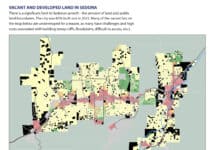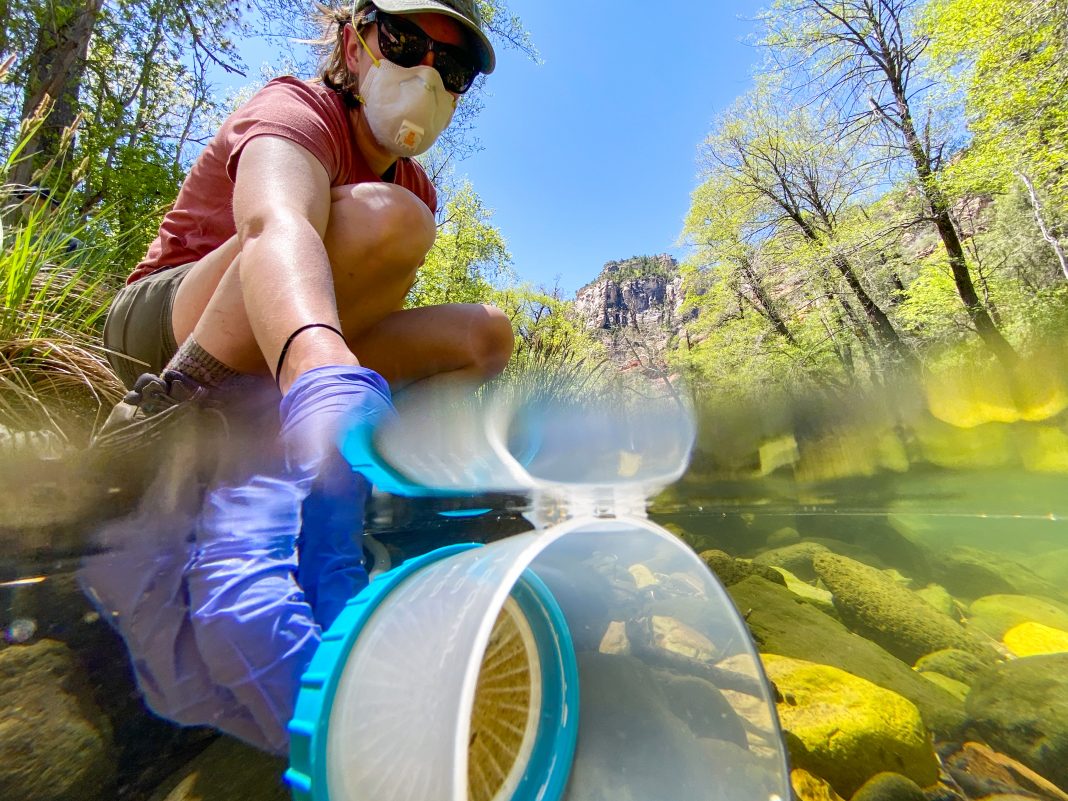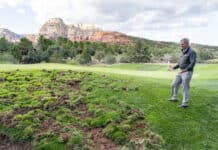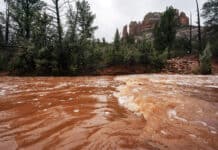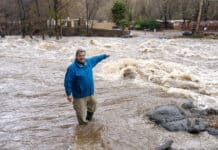Last fall, a worker at the Page Springs Fish Hatchery noticed an invasive New Zealand mudnsail — a tiny snail with a cone-shaped shell the size of F.D.R.’s ear on a dime — launching a high stakes and ultimately successful effort to clear the hatchery of the potentially disruptive species.
Though the mudsnails are native to New Zealand, they have managed to travel to many countries around the world by hitching rides to equipment and other animals.
The discovery of the mudsnails at the hatchery launched a parallel effort to figure out how the tiny snails, previously known in Arizona only in the Colorado River, found their way into the closed hatchery system.
In their sleuthing for the source of the far-traveled mollusk, Arizona Game and Fish and U.S. Forest Service biologists were armed with an increasingly important tool. Environmental DNA, or eDNA, as it’s commonly called, started being used by biologists about three years ago.
The emerging tool allowed local biologists to test sections of Oak Creek for the presence of the mudsnails just by filtering a few liters of water at differ-ent sites along the creek. A more traditional search for the snails would require time intensive searches, down on all fours, flipping over rocks looking for the snails, which are not easy for an untrained eye to distinguish.
At the time mudsnails were detected at the hatchery, even this old school approach was off the table because the snails would be going dormant and burrowing into the creek bed.
But with eDNA, the biologists could detect the presence of the snails in Oak Creek early and begin planning future monitoring and studies to protect the ecosystem. The recent detection of mudnsnails in Oak Creek is benchmark for eDNA, as it may be the first time the technique has been used to discover a previously unknown population in an ecosystem in Arizona.
eDNA works on the principle that animals are always sloughing off DNA into the surrounding environment — shedding skin cells, hair, saliva and many other DNA-containing particles. So by sampling an environment and checking for DNA markers, researchers can tell which animals are living in an area without having to actually see them.
Experiments by biologists in the Southwest show that eDNA detection is sensitive. Last year, Anthony Robinson with the Arizona Game and Fish department, Yvette Paroz with the USFS and other collaborators published the results of eDNA trails detecting native fish in Arizona and New Mexico streams, including Wet Beaver Creek and Spring Creek. They found that eDNA could detect a single small-bodied fish, like a Loach minnow, 100 meters downstream.
Though no one has seen a New Zealand mudsnail in Oak Creek yet, Jeff Sorenson, Native Fish & Invertebrates Program Manager for Arizona Game & Fish, is confident — based on eDNA testing — that snails from the Colorado River have established themselves in Oak Creek.
Local biologists speculate that the snails hitched a ride on felt-soled waders used by an angler traveling from Lees Ferry, a popular fishing destination and a location with an established New Zealand mudsnail population.
Additional eDNA testing of Oak Creek in May sought to pinpoint where in the creek the snails were first introduced.
New Zealand mudsnails are detrimental to native species because the invasive snails can grow to high densities and eat up the algae that forms the foundation of the food chain. But unlike other native mollusks that feed on algae, New Zealand mudsnails don’t give anything back to the food chain, since native fish have trouble digesting them.
Sorenson said the mudsnails have a trap door that they can cover their shell opening with and can pass through a fish’s digestive system unharmed.
“The mudsnails are a lot like junkfood for a lot of our fish and wildlife that are feeding on them. They don’t provide any nutritional value. They’re wasted effort for the fish,” Sorenson said.
In a worst-case scenario, the mudsnails could push out Oak Creek’s rare invertebrates and reduce the amount the total “fish biomass” in the creek, Matt O’Neill, fish biologist for Coconino National Forest, said.
But O’Neill said there’s reason to believe a mudsnail takeover of Oak Creek is unlikely because of the characteristics of Oak Creek’s water flow.
“The flashy nature of our streams makes that [worst-case] outcome seem unlikely to me as mudsnails aren’t very resilient to flooding,” O’Neill said.
Local wildlife managers’ use of eDNA to detect the mudsnail invasion early — which will help them manage the snails — is just the latest sign of USFS’ and Arizona Game and Fish’s pioneering use of eDNA for wildlife management.
Last September Katie Zarn, a lab and project manager with the USFS’s National Genomics Center in Missoula, Montana, transferred to Flagstaff to do eDNA work in the region.
Before Zarn arrived, local biologists had to send eDNA samples to Missoula for processing, but now they can drop off samples in Flagstaff and work closely with Zarn on research projects.
“The [National Genomics Center] lab has grown a ton in the eDNA section,” Zarn said. “A lot of people are really excited about it.”
Sorensen and O’Neill think that eDNA is particularly useful for the Southwest, where many rare and endangered species live in remote and isolated bodies of water. eDNA is preferrable to visual surveys in these conditions.
O’Neill said eDNA is especially useful right now for detecting invasive species early, helping the USFS keep non-native fish out of native fish refuges like Fossil Creek. The biologists also point out that eDNA has become cheaper and easier to use than more traditional survey methods and doesn’t disturb or stress the target animals.
Though eDNA has proven its worth to scientists, work is ongoing to refine the tool. Using eDNA to estimate population size is one area of current study, a frontier that USFS and Arizona Game and Fish scientists are playing a role in exploring.
“In many ways we’re still figuring out how the tool is best used,” O’Neill said.





